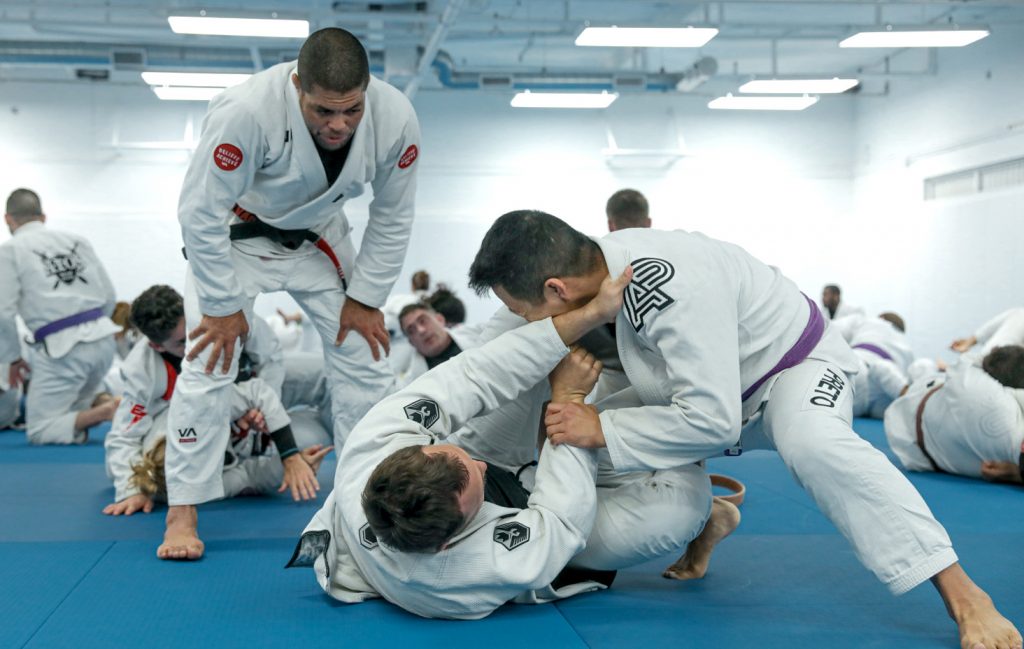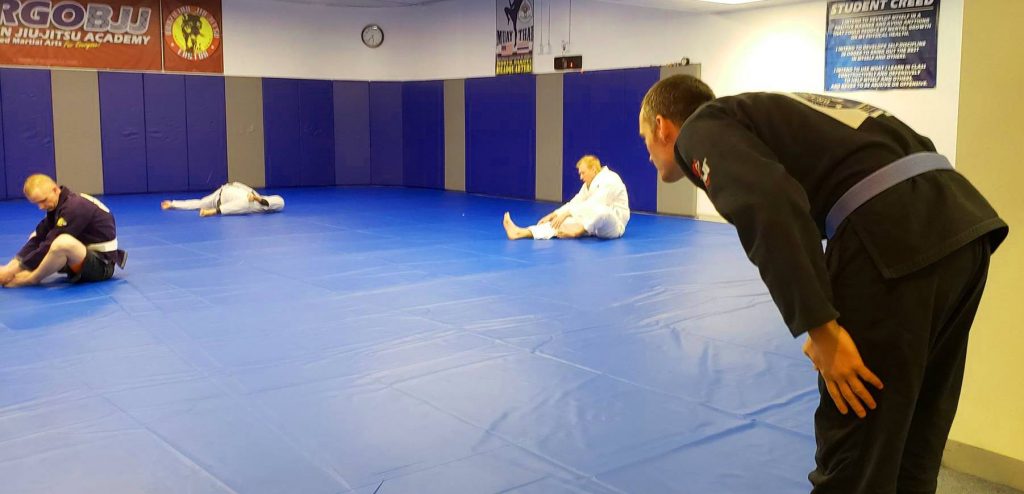
Every sport has traditions, and Jiu-Jitsu is no different. Even though BJJ is young as a sport / martial art, it does have roots in martial arts that have been around for centuries. As such, some traditions are simply a sign of respect to old times, while others are specific BJJ traditions that have formed throughout the years. In any case, knowing how things came to be and what they mean might help you understand the context of BJJ traditions a bit better.
After those first few months in Jiu-Jitsu, when everything is a blur, you start picking up on things in the gym. People do certain things on the mats that seemingly have nothing to do with the sport, or simply make no sense. But that’s exactly how traditions work. To be honest, there aren’t that many BJJ traditions that have spread worldwide, and I guess it is a good thing. Jiu-Jitsu is complicated as it is, and there’s no need to introduce more to the confusion. That said, some BJJ traditions can be really fun, while others make absolutely no sense at all.
The Place Of Traditions In An Untraditional Sport
Jiu-Jitsu is far from traditional martial art, or a traditional combat sport, for that matter. That means that we get to train as traditional martial arts, with a technical answer for every technical question, but then do battle like combat sports, in pure chaos. As if that is not as original as it can get, there are also some weird BJJ traditions that seem like they’ve dropped out of nowhere.

IN terms of BJJ traditions, it’s all about being different again, and not on purpose. You’ll rarely se bowing to pictures of dead people in BJJ, or instructors asking students to sit like Tibetan monks during a demonstration. A lot of those traditions that have their roots in different cultures have been weeded out. What is left are BJJ traditions that make sense (to a certain degree) all across the world. Moreover, they’re fun, friendly, and really do fit into the character of Jiu-Jitsu perfectly.
A Few BJJ Traditions Everyone Should Know
The thing with BJJ traditions is that you could consider just about anything to be one. To that extent, there’s no point trying to figure out what every academy has pegged as a tradition. However, there are certain things that grapplers all around the world do, and in most cases, they really have no idea why. From saying Oss all the time to never take a photo without the Shaka gesture, from the promotion gauntlets to the slap and bump, there are some curious and fun-looking BJJ traditions out there.
Without claiming to go deep enough to include very possible BJJ tradition that’s spread around the globe, let’s just talk about a few most of us have run into.
Slap And Bump
How does every BJJ roll and match start? You slap hands than immediately bump fists and it’s go-time. It is the same everywhere around the world, in every gym, at every competition at every BJJseminar or camp. Everyone does it and nobody is asking if they should do it or not. But why? Where exactly does this tradition come from?
This is not something that has been a part of BJJ since its inception. Instead, this tradition emerged in the early 2000s, coming to the mats in the form of a Brazilian fad. As with other BJJ traditions, this one might have started with surfers in Brazil, and subsequently ended up on the mats.
The meaning behind this is a sort of an unspoken agreement that the training partners and even opponents in a match will keep things fair, and would look out for one another. Nowadays, it signifies the start of a roll, and in most cases, every restart during a round, after one of the training partners taps out. It is one of those things that symbolize respect in Jiu-Jitsu, which is kind of a big deal for grapplers.
Bowing
This is clearly a remnant of the Japanese traditional martial arts roots of Jiu-Jitsu. Beita Japanese, Chinese, Korean, or any other Easter martial art, bowing is a part of it. In most, it is just a bow as we do at the start/end of class. Others. though, bow throughout the class, they bow down to pictures, empty gyms, kneeling down to bow, etc. In eastern culture there’s a lot of meaning to this, but what does it mean in BJJ as a global sport?

The Pineapple Conundrum
This is probably the funniest of all BJJ traditions. According to this one, you need to bring a pineapple for the instructor on your first day of training. It started off as a joke on Reddit, from what I could find. However, people have started showing up with pineapples to class, whether jokingly or seriously, and this one might just end up being really funny in a few years.
The premise behind it was that people who couldn’t pay for BJJ brought their instructors fruit in the early days in Brazil. When BJJ spread, somehow it turned to bring a pineapple on your very first class. Of course, this one is a joke, but it is one that’s catching on so I’m really looking forward to seeing where we end up with the pineapple thing.
The Gauntlet(s)
Arguably the most controversial BJJ tradition out there. When people get promoted in BJJ, it is a big thing. I’m not talking stripes here, but actually getting the next belt. Apart from getting a black belt, the tradition dictates that you need to go through a gauntlet of your teammates, while they’re whipping you mercilessly with their belts. The gauntlet has many forms and it is not always belt whipping. I’ve been to an academy where everybody had to punch the promoted student in the gut, and throw them or take them down. Also not fun (for the promoter).

Not Washing Your Belt
If the gauntlet is the most controversial of all BJJ traditions, not washing your belt is the nastiest one. It is not a tradition but more of a superstition, and one we certainly don’t need in Jiu-Jitsu. Hopefully, the Covid-19 pandemic will get even the most hardcore believers in not washing your belt to change their minds.
The idea si that you’ll wash away all your mojo, or knowledge, or experience, or whatever it is if you wash your belt. Considering that a belt is made out of cotton, that’s not a really smart thing to do. You do wash your Gi after every class, so why not include the belt? Unfortunately, in certain places, this practice gets passed on as a BJJ tradition, which it is not. So be smart, wash that belt!
Belt Hierarchy Traditions
What happens when a higher belt asks you to roll? How about you asking them to roll first? And what if you bump into people with higher belts while you’re rolling? Some of these could well be thought of as BJJ traditions, while others are just courtesy.
In terms of asking to roll, I see it as dumb. There’s no point that a lower belt can’t ask a higher one, back or otherwise, to roll. The higher belt can always say no if they feel like it., But then again, so can everyone. In some schools, this is a tradition that is really honored, but it makes no sense to me. Similarly, there’s a tradition that if a higher belt asks you to roll, particularly a black belt, you shouldn’t say no.
This has roots in Japanese martial arts, where refusing s seen as dishonorable and weak. In BJJ, particularly in modern times, where different types of people train, ti is not really something that makes sense. In terms of higher belts refusing, that’s not an issue, but I’ve seen many gyms around the world that really reinforce the tradition about not saying no to a higher belt when they ask you to roll.
As for the courtesy of moving away from higher belts when you bump into them during trolling. That’s just common sense. They’re in a more complicated position most likely anyway.
The Shaka

The origins of the Shaka are uncertain as well, but they do involve a man with three fingers missing that used to wave folks in Hawaii, most likely. Whether he was a fisherman or a train operator is not clear, but he did exist and his gesture is now famous worldwide because of BJJ. The meaning is the same as in surfing – “hang loose”.
“Oss”
Probably the one thing most easily associated with Jiu-Jitsu, along with the Shaka. It is one more Japanese formality that has found its way into BJJ via the eastern roots. Similarly to bowing, it is more of a thing that is said, rather than something done in the original formal way as in Japan. Oss has many meanings, from “let’ train” to “thank you for with you’ve taught me” and even “Hello”. In that sense, throwing it around might just have a sense, but as a BJJ tradition, we’ve completely taken it out of context. Every second word out of most people’s mount is “Oss”, and, while it is a sign of respect that we’ve kept it, nowadays it means just anything you want it to mean.
The Clap
Finally, a tradition that has the BJJworld divided. Lots of schools have instructors that end every technique demonstration with 1,2andacalp (the count can be to 3 instead of 2). It is a method that supposedly strengthens team spirit, synchronizes people, and helps mark the end of the demonstration. As such, it is pretty much futile in Jiu-Jitsu, but it is one of those BJJ traditions that’s quite widespread. Some people can’t do without it, while others despise it completely. In any case, the clap is here to stay, although how ti got into BJJ remains unclear at this point.
All In All
BJJ traditions can be fun, like the pineapple thing. They can also have a deeper meaning, showing respect to our roots, or can just be complete coincidences that somehow ended up defining the sport, like the Shaka. There are, of course, plenty more traditions out there, and we’d be delighted to hear some of them if you have to share. Feel free to sound off in the comments!












































